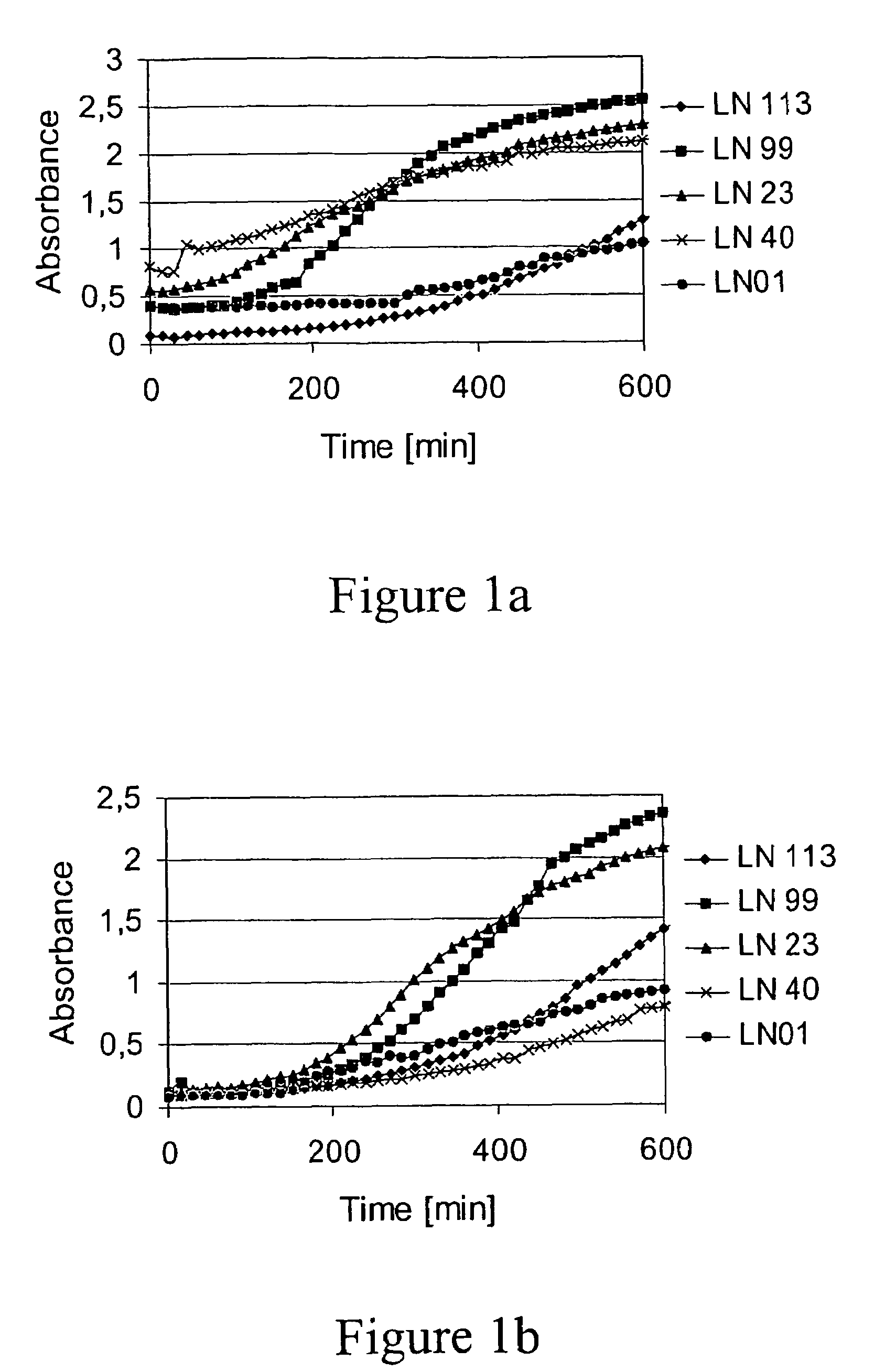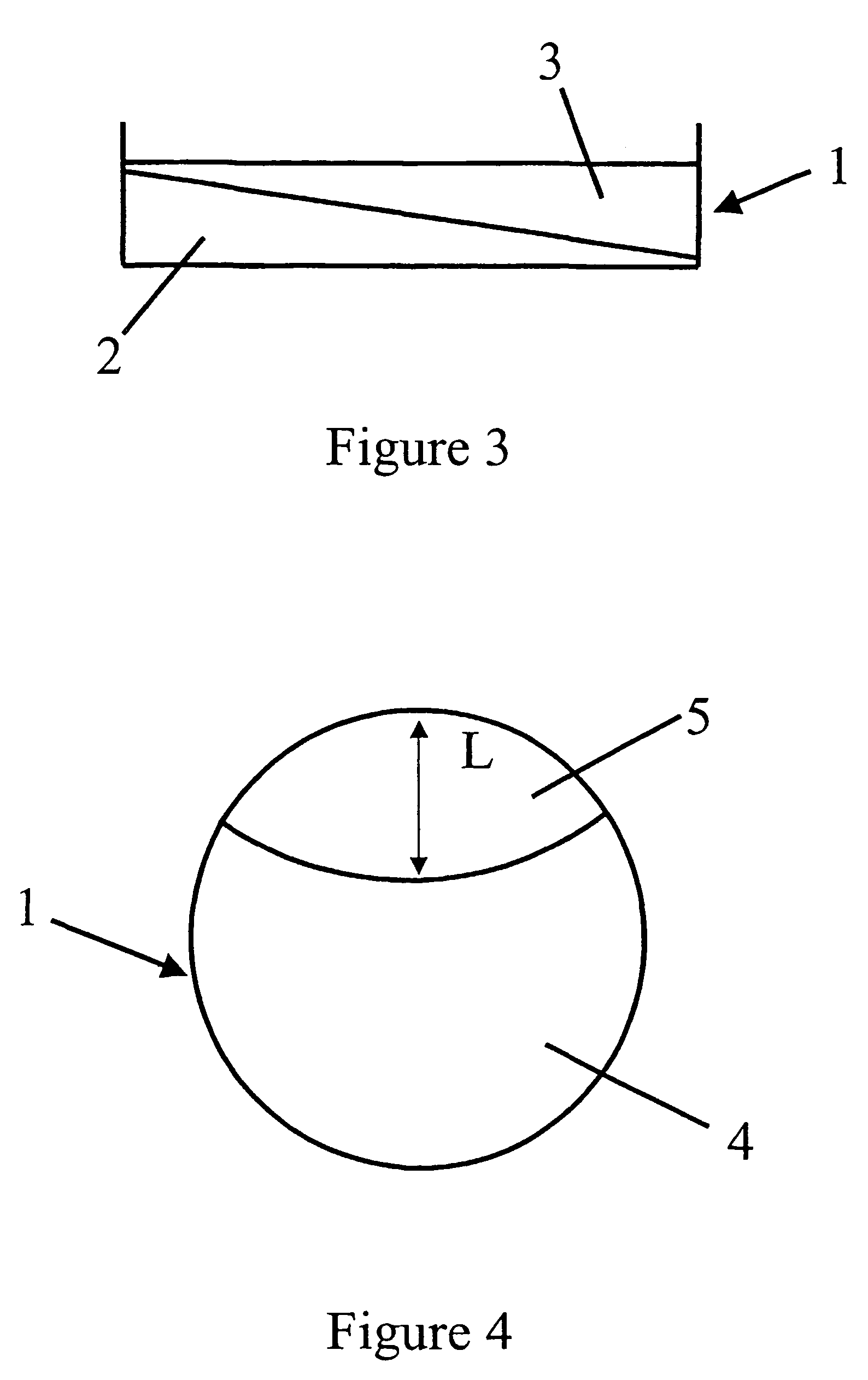Lactic acid producing bacteria for use as probiotic organisms in the human vagina
a technology of probiotic organisms and lactic acid, which is applied in the direction of bacteria-based processes, antibacterial agents, contraceptives, etc., can solve the problems of increased vaginal discharge and irritation, volatile amines, and present a “fishy” odour, and achieve the effect of convenient administration
- Summary
- Abstract
- Description
- Claims
- Application Information
AI Technical Summary
Benefits of technology
Problems solved by technology
Method used
Image
Examples
example 1
Colonisation and Establishment of Lactic Acid Producing Bacteria upon Vaginal Administration
[0089]15 BV-patients (women which had been diagnosed having Bacterial Vaginosis) were studied. All 15 patients were treated with clindamycin ovules (Dalacin® 2% ovule, from Pharmacia) for 3 days. Thereafter the treatment continued with a double blind placebo controlled part where 6 patients used tampons comprising approximately 103 cfu lyophilised bacteria of the strains LN 01, LN 23, LN 99, LN 113, and LN 40 during the first menstrual period after the antibiotic treatment. The other 9 patients used conventional tampons without lactic acid producing bacteria. During the second menstrual period, all 15 patients used conventional tampons without lactic acid producing bacteria, and a vaginal sample was taken a few days after this menstruation.
[0090]The vaginal samples were Gram stained. In the standardised Gram stain method presented by Nugent et al, the presence or absence of certain bacterial ...
example 2
Colonisation and Establishment of Lactic Acid Producing Bacteria upon Vaginal Administration
[0097]Four healthy women with no vaginal complaints used tampons comprising approximately 103 cfu lyophilised bacteria of the strains LN 01, LN 23, LN 99, LN 113, and LN 40 during their monthly menstrual discharge during a period of 12-18 months.
[0098]Vaginal samples from each of the women were evaluated after said test period. The Lactobacillus and Pediococcus strains found in the samples were identified using RAPD (Random Amplified Polymorphic DNA) as described in Example 10.
[0099]LN 01 and LN 113 were identified in two of the vaginal samples from said women.
[0100]LN 40 was identified in one of the vaginal samples from said women.
[0101]LN 23 and LN 99 were not identified in any of the vaginal samples from said women.
[0102]An explanation for these results might be that, when said bacteria pool is administered to a woman displaying a healthy vaginal flora with a normal vaginal pH, LN 23 will ...
example 3
Stability of Viability upon Lyophilisation and Over Long Periods of Storage (Shelf Life) for Bacterial Strains LN 40, LN 113, LN 99, and LN 23
[0105]Lyophilised bacterial strains LN 40, LN 113, LN 99, and LN 23 were evaluated with regard to stability of viability over longer periods of storage (i e shelf life) at about −18° C.
[0106]
TABLE 3Time afterlyophili-sationViable bacteria [cfu / g][months]LN 40LN 113LN 99LN 23LN 01 083 × 109224 × 101033 × 109290 × 10920 × 1091247 × 109192 × 101014 × 109272 × 10919 × 109(~57%)(~86%)(~42%)(~94%)(~95%)7822 × 109 46 × 109 6 × 109155 × 109 2 × 109(~27%)(~21%)(~18%)(~53%)(~10%)
[0107]The results presented in Table 3 show that at least 40% of the bacteria are still viable after 12 months at −18° C. Furthermore, at least about 10-20% of the bacteria are still viable after 78 months at −18° C.
[0108]Furthermore, these bacteria were also analysed according to API 50CH, and results obtained from this analysis indicated that the strains LN 40, LN 113, LN 99,...
PUM
| Property | Measurement | Unit |
|---|---|---|
| time | aaaaa | aaaaa |
| time | aaaaa | aaaaa |
| pH | aaaaa | aaaaa |
Abstract
Description
Claims
Application Information
 Login to View More
Login to View More - R&D
- Intellectual Property
- Life Sciences
- Materials
- Tech Scout
- Unparalleled Data Quality
- Higher Quality Content
- 60% Fewer Hallucinations
Browse by: Latest US Patents, China's latest patents, Technical Efficacy Thesaurus, Application Domain, Technology Topic, Popular Technical Reports.
© 2025 PatSnap. All rights reserved.Legal|Privacy policy|Modern Slavery Act Transparency Statement|Sitemap|About US| Contact US: help@patsnap.com



